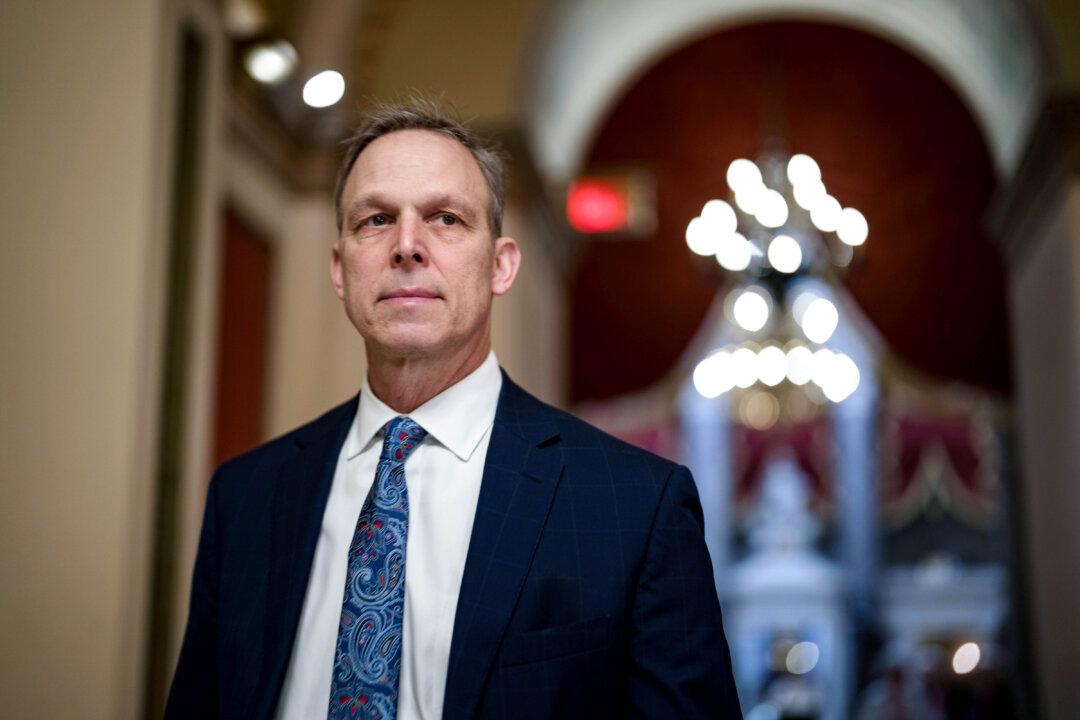The government will focus on building new homes in England’s inner city areas instead of “concreting over the countryside,” Prime Minister Rishi Sunak has said as the government unveiled its long-term housing plan on Monday.
Mr. Sunak said the government is on track to deliver its pledge to build a million homes before the next election, and will “build the right homes where there is the most need and where there is local support, in the heart of Britain’s great cities.”
It comes after a report recently published by the Levelling Up, Housing, and Communities Committee said that the government is expected to miss a separate target of building 300,000 net new homes per year by the mid-2020s.
The plan, announced by Levelling Up Secretary Michael Gove, includes regeneration schemes to make “transformational” changes in Cambridge, central London, and central Leeds.
It also includes investment to speed up the planning process and proposals to relax some planning rules.
The government said it will launch two consultations on planning reform, one on how to make it easier to convert larger department stores, space above shops, and office space; and another on allowing homeowners to create new living spaces by extending homes, converting lofts, and renovating new buildings.
An initial £24 million Planning Skills Delivery Fund was announced to train planning officials and clear backlogs.
Another £13.5 million is earmarked for a “super-squad” of leading planners and other experts to unclog bottlenecks in major housing developments.
The team will first be deployed to help Cambridge build a “new quarter of well-designed, sustainable and beautiful neighbourhoods ... with space for cutting-edge laboratories, commercial developments fully adapted to climate change and that is green, with life science facilities encircled by country parkland and woodland accessible to all who live in Cambridge,” the government said.
Ministers also promised to deliver up to 65,000 homes in east London and up to 20,000 new homes in central Leeds over the next decade, as well as up to 56,000 new homes across the rest of England.
Monday’s announcement was heavily focused on Cambridge, with the ambition of making it “Europe’s science capital.”
Cambridge MP: Plan ‘Dead On Arrival’ Without Water
But the building plan for Cambridge was criticised by a local MP.Just before Mr. Gove announced details of the plan in Parliament, Conservative MP for South Cambridgeshire Anthony Browne said the plan is “dead on arrival” unless the government “can say where the water will come from.”
Writing on Twitter, Mr. Browne said: “Cambridge already has about the highest housebuilding in the country, and under the local plans that is set to double with 50,000 new homes by 2050, effectively doubling the size of Cambridge. But there is one major problem: we have run out of water.
“Our rivers, streams, and ponds already run dry. The wetland reserve at Fowlmere where I grew up now only has water in summer because the Environment Agency pumps it there.
“There is not enough water for existing housing; there is not enough for the major expansion of housing already planned; and there is not enough for any [government] plans for a new quarter. As I say, unless the [government] can say where the water will come from, it’s [sic] plans are dead on arrival,” he wrote.
Responding to Mr. Browne’s criticism, the prime minister said he doesn’t want to “impose top-down targets.”
Mr. Sunak told broadcasters during a visit to the West Midlands, “No one is doing mass house building in Cambridge, this is about adding a new urban quarter to Cambridge, which is something that local communities have spoken about.”
The prime minister said the development will be carried out “in dialogue with local communities” and that it’s “right” housing targets are set by local communities and representatives.
Labour: ‘Broken Promises’
Asked whether the government will stand by its promise to build 300,000 new homes each year, Mr. Sunak told reporters that the government is “making good progress towards that,” but didn’t commit to the target, saying he doesn’t want to “ride roughshod over the views of communities and their representatives.”Shadow housing secretary Lisa Nandy said the government has “never met its target to build 300,000 homes a year,” and that the plan announced on Monday “doesn’t come close to matching the scale of ambition needed to fix the housing crisis.”
She also blamed Conservative MPs for blocking housing development.
The government hasn’t delivered its promises, Ms. Nandy told ITV, “not least because they’ve been under pressure from their own backbenchers to block housing developments altogether. That’s why house building has fallen off the cliff.”
“We need less of these broken promises, less of the recycled commitments, and a government that is genuinely serious about getting Britain building again,” she said.





